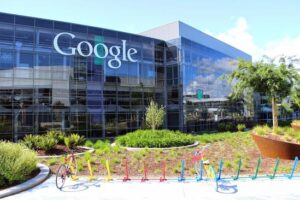Apple, Amazon, and Berkshire Hathaway minted a lot of millionaires.
For a stock to turn a $1,000 investment into $1 million, it would need to rally 99,900%. The S&P 500 rose 5,240% over the past 50 years — so it might seem impossible to find that rare growth stock that could deliver big millionaire-making gains.
Yet three of the most valuable companies today — Apple (AAPL -0.44%), Amazon (AMZN -0.74%), and Berkshire Hathaway (BRK.A -0.59%) (BRK.B -0.48%) — actually generated those jaw-dropping gains over the past few decades. Let’s see how they turned their most patient investors into millionaires and if they can keep growing for the foreseeable future.

Image source: Getty Images.
1. Apple
Apple went public at a split-adjusted price of $0.10 per share on Dec. 12, 1980. A $1,000 investment in its initial public offering (IPO) would be worth $2.28 million today. Apple is now the world’s most valuable publicly traded company with a market cap of $3.47 trillion.
The company was once an underdog maker of personal computers in a market dominated by Windows-powered PCs. Its business stagnated in the late 1980s and early 1990s before its co-founder Steve Jobs returned as its CEO in 1997. Under Jobs, Apple reignited its growth by launching the iMac, iPod, iPhone, and iPad. It attracted a new generation of consumers with its sleek new devices and premium price tags and locked them into its walled garden of services.
Many investors wondered if Apple could keep growing after Jobs’ death in 2011, but his successor Tim Cook maintained the company’s momentum by upgrading its core devices, launching new products like the Apple Watch and AirPods, and expanding its services ecosystem. Apple also returned a lot of its cash to its investors through its buybacks and dividends.
From fiscal 1997 to fiscal 2023 (which ended last September), Apple’s revenue grew at a compound annual growth rate (CAGR) of 17%. Its business is maturing but could keep growing as it rolls out new devices and artificial intelligence (AI) services.
2. Amazon
Amazon went public at a split-adjusted price of $0.075 a share on May 15, 1997. A $1,000 investment in its IPO would have grown to $2.55 million. Amazon is now worth $2.01 trillion, making it the fifth most valuable public company in the world.
Amazon initially sold books through its online store but subsequently expanded its marketplace to sell other types of products. It also opened up its marketplace to third-party sellers. In 2002, it launched Amazon Web Services (AWS), which grew into the world’s largest cloud infrastructure platform during the following two decades.
Many skeptics thought Amazon’s capital-intensive business model was unsustainable, but economies of scale eventually kicked in across its marketplace and diluted its fulfillment expenses. It also subsidized the expansion of its lower-margin retail business with AWS’ higher-margin revenue and locked its shoppers into its sticky Prime subscriptions.
From 1997 to 2023, Amazon’s revenue rose at a stunning CAGR of 37%. Its growth has slowed down over the past decade, but the company remains a balanced way to profit from the secular expansion of the e-commerce and cloud infrastructure markets. The feverish demand for new AI applications should also generate strong tailwinds for AWS over the next few years.
3. Berkshire Hathaway
Berkshire Hathaway was founded in 1839, but its modern history begins with Warren Buffett’s full takeover of the company in 1965. After 15 years of expanding and restructuring its business, Berkshire Hathaway listed its Class A shares at an IPO price of $290 on March 16, 1980.
A $1,000 investment in those shares would be worth $2.36 million today. Berkshire now has market cap of $980 billion, making it the world’s eighth most valuable public company.
Berkshire Hathaway operates two main growth engines. First, it directly owns a long list of insurance, railroad, utility, and consumer staples businesses. These subsidiaries are mostly recession-resistant businesses that generate lots of cash.
Second, Berkshire pours a lot of that cash into its closely watched investment portfolio, which consists of more than 50 stocks and exchange-traded funds (ETFs). Its top holdings — which were chosen by Buffett himself — include Apple, American Express, Bank of America, and Coca-Cola.
Berkshire’s well-diversified business was built to withstand recessions, and it’s consistently outperformed the S&P 500 ever since its IPO. From 1980 to 2023, its operating earnings (which exclude its investment gains and losses) grew at a CAGR of 17%.
Some investors might be wondering if Berkshire can maintain its momentum after Buffett hands the reins over to his successor Greg Abel. I believe its evergreen business can keep beating the market for decades to come.
John Mackey, former CEO of Whole Foods Market, an Amazon subsidiary, is a member of The Motley Fool’s board of directors. Bank of America is an advertising partner of The Ascent, a Motley Fool company. American Express is an advertising partner of The Ascent, a Motley Fool company. Leo Sun has positions in Amazon, Apple, and Berkshire Hathaway. The Motley Fool has positions in and recommends Amazon, Apple, Bank of America, and Berkshire Hathaway. The Motley Fool has a disclosure policy.






